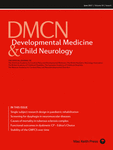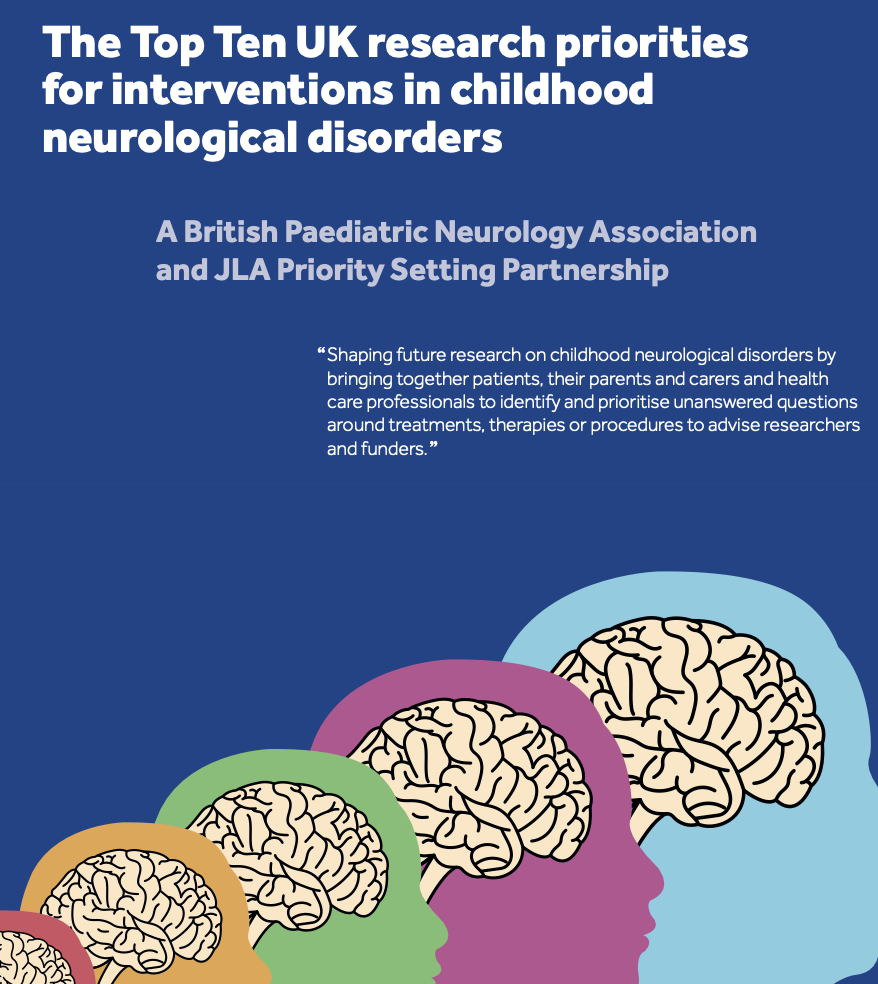Journal list menu
Export Citations
Download PDFs
Issue Information
Editorial
Cerebral palsy: is the concept still viable?
- Page: 564
- First Published: 02 May 2017
Commentaries
Retinal haemorrhage: a red flag for raised intracranial pressure
- Page: 565
- First Published: 04 April 2017
This commentary is on the original article by Minns et al. on pages 597–604 of this issue.
A life course approach to increase physical activity in individuals with Rett syndrome
- Page: 566
- First Published: 11 March 2017
This commentary is on the original article by Downs et al. on pages 605–611 of this issue.
Health care and risk of early death for people with learning disabilities
- Page: 567
- First Published: 05 January 2017
This commentary is on the original article by Amin et al. on pages 612–617 of this issue.
Fidgety movements, cerebral palsy, and cognitive ability
- Page: 568
- First Published: 23 February 2017
This commentary is on the original article by Datta et al. on pages 618–624 of this issue.
Hand–arm bimanual intensive therapy: a new direction
- Page: 569
- First Published: 08 March 2017
This commentary is on the original article by Bleyenheuft et al. on pages 625–633 of this issue.
Towards a comprehensive profile of dyskinetic cerebral palsy
- Page: 570
- First Published: 13 March 2017
This commentary is on the original article by Monbaliu et al. on pages 634–640 of this issue.
The Gross Motor Function Classification System: 20 years on
- Page: 571
- First Published: 16 February 2017
This commentary is on the original article by Alriksson-Schmidt et al. on pages 641–646 of this issue.
Distribution of children in class I through V in functional classification systems
- Page: 572
- First Published: 04 April 2017
This commentary is on the original article by Benfer et al. on pages 647–654 of this issue.
Self-concept research in cerebral palsy: development of a population-specific measure
- Page: 573
- First Published: 28 February 2017
This commentary is on the original article by Cheong et al. on pages 655–660 of this issue.
Reviews
Single-subject research designs in pediatric rehabilitation: a valuable step towards knowledge translation
- Pages: 574-580
- First Published: 22 February 2017
- Single-subject research designs (SSRDs) preserve variability of individual responses to care, with designs and levels of evidence relative to robustness of experimental control and quality of implementation.
- N-of-1 trials (or other SSRDs) may be used to decide the best treatment protocol for an individual patient without bias.
Event-related potential measures of executive functioning from preschool to adolescence
- Pages: 581-590
- First Published: 06 February 2017
- Event-related components show maturational changes from preschool to adolescence.
- Altered developmental trajectories are associated with atypical executive functioning.
- Event-related potentials can serve as biological markers for the development and dysfunction of executive skills.
Screening and evaluation tools of dysphagia in children with neuromuscular diseases: a systematic review
- Pages: 591-596
- First Published: 09 December 2016
- The first systematic review on dysphagia screening and evaluation tools in paediatric patients with neuromuscular diseases (NMD).
- In NMD there are alternatives to videofluoroscopic swallow study for dysphagia assessment.
- It highlights the need for additional studies of paediatric patients with NMD.
Original Articles
Raised intracranial pressure and retinal haemorrhages in childhood encephalopathies
- Pages: 597-604
- First Published: 29 March 2017
- Generally, raised intracranial pressure (RICP) predicts retinal haemorrhages after adjusting for age and aetiology.
- Specific intracranial pressure level (mmHg) was not correlated with retinal haemorrhage numbers.
- No evidence of new retinal haemorrhages during acute admission with RICP.
- Retinal haemorrhage–RICP association is different in inflicted traumatic brain injury compared with other aetiologies.
This article is commented on by Squier on page 565 of this issue.
Quantification of walking-based physical activity and sedentary time in individuals with Rett syndrome
- Pages: 605-611
- First Published: 06 February 2017
- Females with Rett syndrome were sedentary for most waking hours.
- Walking-based physical activity was mostly undertaken at slow cadences.
- Both adolescents and adults had more sedentary time than children.
This article is commented on by McPhee and Gorter on page 566 of this issue.
Causes of mortality in individuals with tuberous sclerosis complex
- Pages: 612-617
- First Published: 09 December 2016
- Sudden unexpected death in epilepsy is an important cause of mortality in patients with tuberous sclerosis complex (TSC).
- Patients with learning disabilities are at significantly greater risk of early mortality.
- Female patients are more vulnerable to renal and pulmonary disease compared with male patients.
- Less well-known manifestations of TSC, such as pancreatic malignancy, are important causes of death.
This article is commented on by Harding on page 567 of this issue.
Fidgety movements in infants born very preterm: predictive value for cerebral palsy in a clinical multicentre setting
- Pages: 618-624
- First Published: 19 January 2017
- Fidgety movement assessment (FMA) in infants born very preterm is practicable in a clinical setting.
- Clinical results of FMA are less robust than when performed in academic settings.
- A combination of FMA and cerebral ultrasound appears to improve prognostic information.
- FMA at 3 months can help to identify infants at risk for cognitive dysfunction.
This article is commented on by Zuk on page 568 of this issue.
Intensive upper- and lower-extremity training for children with bilateral cerebral palsy: a quasi-randomized trial
- Pages: 625-633
- First Published: 30 January 2017
- Hand–arm bimanual intensive therapy including lower extremity can be adapted for children with bilateral cerebral palsy (CP).
- Children demonstrate improvements in upper extremities, gross motor function, walking, and balance.
- They also demonstrate improvements in goal performance.
- Therapies based on motor skill learning are adaptable and efficient for children with bilateral CP.
This article is commented on by Charles on page 569 of this issue.
Functional outcomes in children and young people with dyskinetic cerebral palsy
- Pages: 634-640
- First Published: 08 March 2017
- Dystonia is significantly related with all classifications, except the Communication Function Classification System (CFCS).
- Eating and Drinking Ability Classification System (EDACS) and Viking Speech Scale are significantly related with Gross Motor Function Classification System (GMFCS), Manual Ability Classification System (MACS), and CFCS.
- No significant relationship between choreoathetosis and classification scales at young age.
- Higher relationship between choreoathetosis and MACS and EDACS at older age.
This article is commented on by Pueyo on page 570 of this issue.
Video Podcast: https://youtu.be/fr8UOj3tdk4
Stability of the Gross Motor Function Classification System in children and adolescents with cerebral palsy: a retrospective cohort registry study
- Pages: 641-646
- First Published: 13 January 2017
- Further evidence of the stability of the Gross Motor Function Classification System (GMFCS) in children with cerebral palsy.
- More than half of the children received the same GMFCS rating at all assessments.
This article is commented on by McCormick on page 571 of this issue.
The Eating and Drinking Ability Classification System in a population-based sample of preschool children with cerebral palsy
- Pages: 647-654
- First Published: 09 March 2017
- Intrarater reproducibility for Eating and Drinking Ability Classification System (EDACS) is strong.
- Interrater reproducibility is fair, when classifying unfamiliar preschool children on a single videoed mealtime.
- EDACS classification is strongly related to the Gross Motor Function Classification System.
- EDACS classification is strongly related to standardized clinical feeding evaluation, suggesting strong construct validity.
- The EDACS is a viable classification of feeding ability in children with cerebral palsy.
This article is commented on by Gisel on page 572 of this issue.
myTREEHOUSE Self-Concept Assessment: preliminary psychometric analysis of a new self-concept assessment for children with cerebral palsy
- Pages: 655-660
- First Published: 19 January 2017
- myTREEHOUSE is a population-specific assessment which offers a unique evaluation of self-concept.
- myTREEHOUSE is valid and reliable for children with cerebral palsy.
This article is commented on by Causgrove Dunn on page 573 of this issue.
The Health, Functioning and Wellbeing Summary Traffic Light Communication Tool: a survey of families’ views
- Pages: 661-664
- First Published: 23 December 2016
- The Health, Functioning and Wellbeing Summary helped families to gather and prioritize their thoughts before consultations.
- From the families’ perspectives, use of the tool improved communication during consultations.
- The tool ensured that the serious concerns of families were addressed during consultations.
Video Podcast: https://youtu.be/Zx4idZRPcy4






